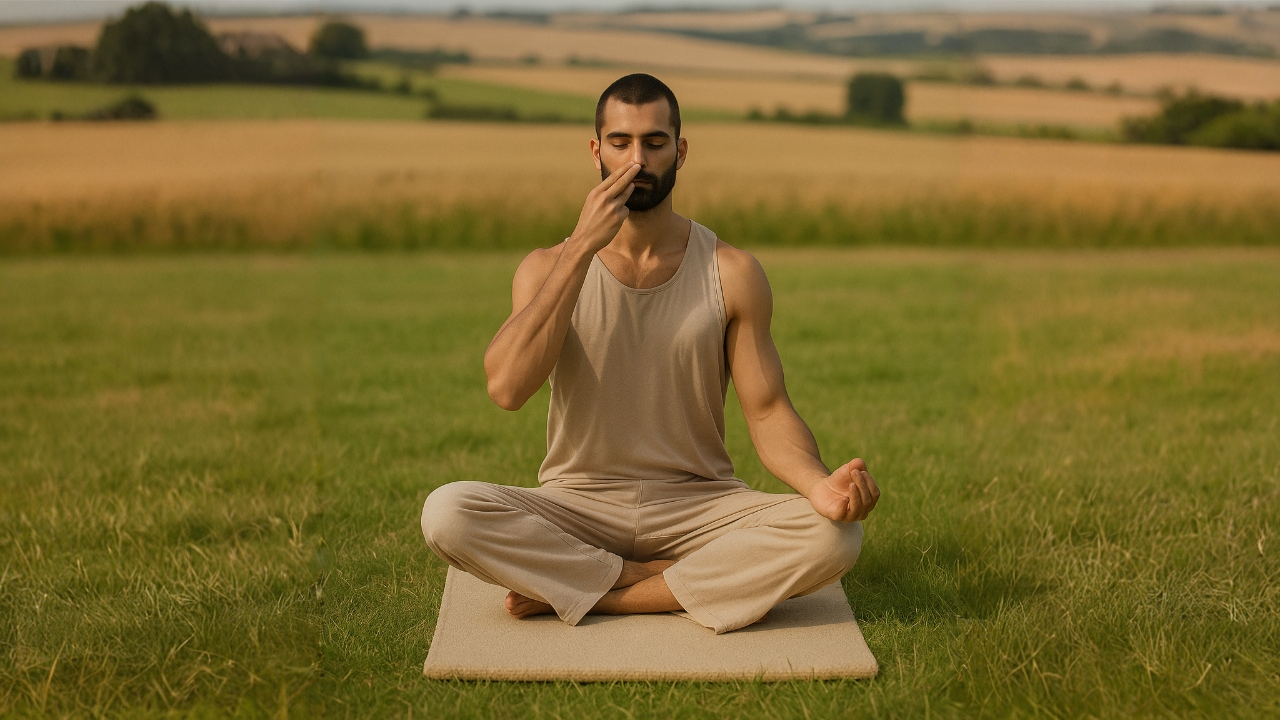Historically, Ujjayi Breathing Yoga, also known as Ujjayi Pranayama in Sanskrit, has been a time-honored yogic technique known for enhancing respiratory health—especially benefiting the throat, nasal passages, and lungs. It is a foundational practice in many yoga traditions, revered for its therapeutic and calming effects.
In this comprehensive guide, you’ll explore what Ujjayi Pranayama is, how to perform it correctly, its numerous health benefits, and how to incorporate it into your daily wellness routine.
How to Perform Ujjayi Pranayama (Step-by-Step Instructions)
Step 1 – Settle into a Comfortable Posture
Choose a seated position that you can maintain comfortably—either cross-legged on the floor or seated on a chair. Ensure your spine is upright, shoulders at ease, and hands resting naturally on your knees. Gently close your eyes to bring your focus inward.
Step 2 – Begin the Inhalation with Throat Constriction
Lightly constrict your throat (glottis) and take a slow breath in through your nose. When done properly, the airflow will produce a gentle snoring-like sound as it moves through the narrowed throat.Step 3 – Hold the Breath and Lower the Chin
Once your lungs are filled, retain the breath momentarily. Lower your chin toward your chest in a gentle neck flexion (this is known as Jalandhara Bandha, or the chin lock). Keep your spine straight throughout.
Step 4 – Controlled Exhalation
Slowly raise your head, then gently use your right thumb to block the right nostril and exhale through the left. The breath should remain smooth and effortless.
Step 5 – Repeat the Cycle
One cycle consists of steps 2 through 4. Repeat this cycle for approximately 5 minutes, or as long as feels comfortable.
Video tutorial for Ujjayi Yoga
Useful Tips for Effective Ujjayi Practice
Begin with short sessions:
Practice for 5 minutes daily during the first few weeks. As you gain confidence and control, extend your sessions to 10 minutes or more.
Cleanse your airways beforehand:
Rinse your mouth, throat, and nasal passages with lukewarm water to remove mucus and improve airflow during the practice.
Listen to the sound:
The audible breath serves as an anchor for concentration and helps maintain rhythmic breathing.
Health Benefits of Ujjayi Breathing
- Strengthens respiratory muscles: Ujjayi breathing enhances the function of the diaphragm and other muscles involved in respiration.
- Clears the airways: The technique encourages rhythmic, focused exhalations that help dislodge mucus and relieve nasal or bronchial blockages.
- Supports glandular health: Regular practice may improve conditions related to the sinuses, tonsils, thyroid, and parathyroid glands.
- Improves sleep and mood: By balancing the nervous system and improving oxygen flow, Ujjayi may help reduce snoring, sleep disturbances, and mood fluctuations.
Final Thoughts
Ujjayi Pranayama is a simple yet impactful yogic breathing practice that harmonizes the body, mind, and breath. Whether you are new to yoga or an experienced practitioner, incorporating Ujjayi into your routine can bring greater mental clarity, emotional stability, and physical well-being. Begin with just a few minutes each day, and allow the breath to guide you toward inner calm and focus.

Comments
Post a Comment